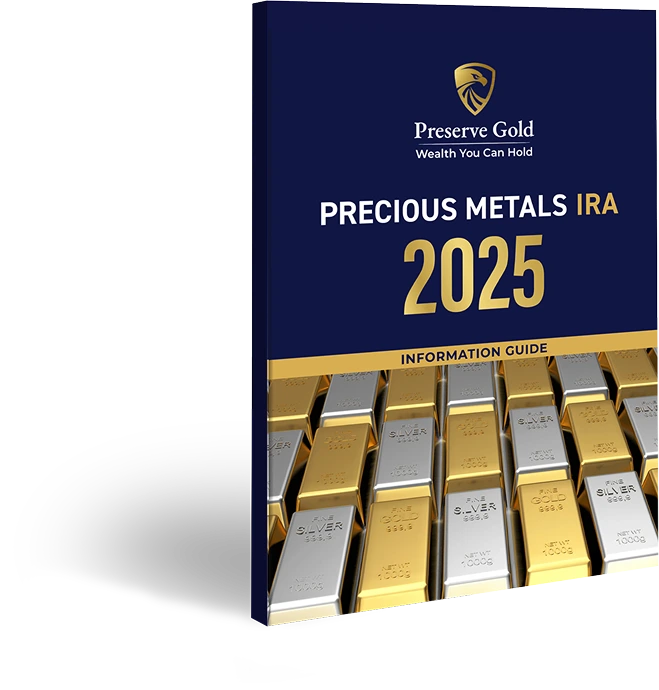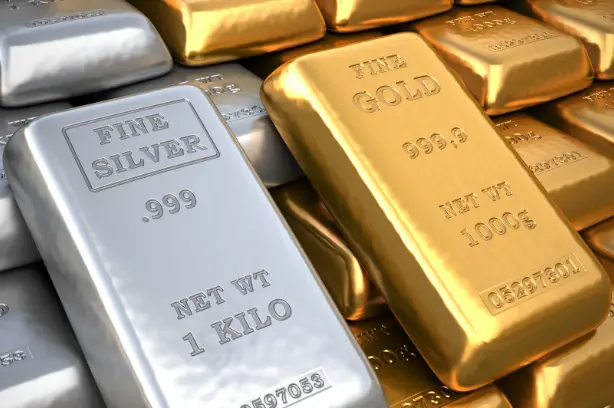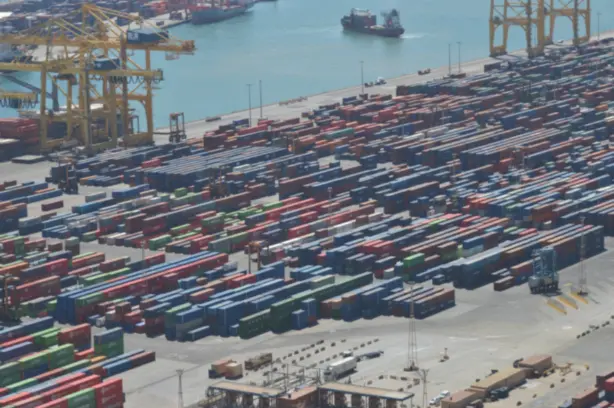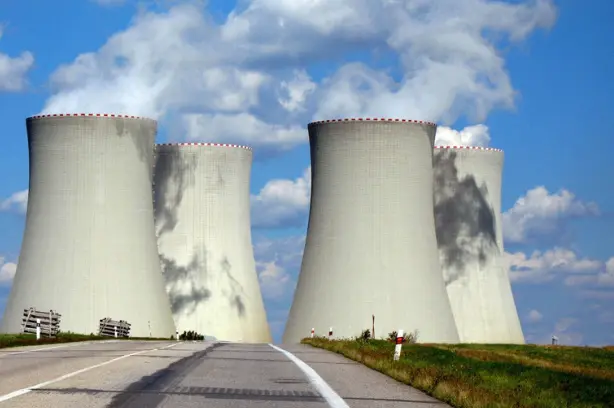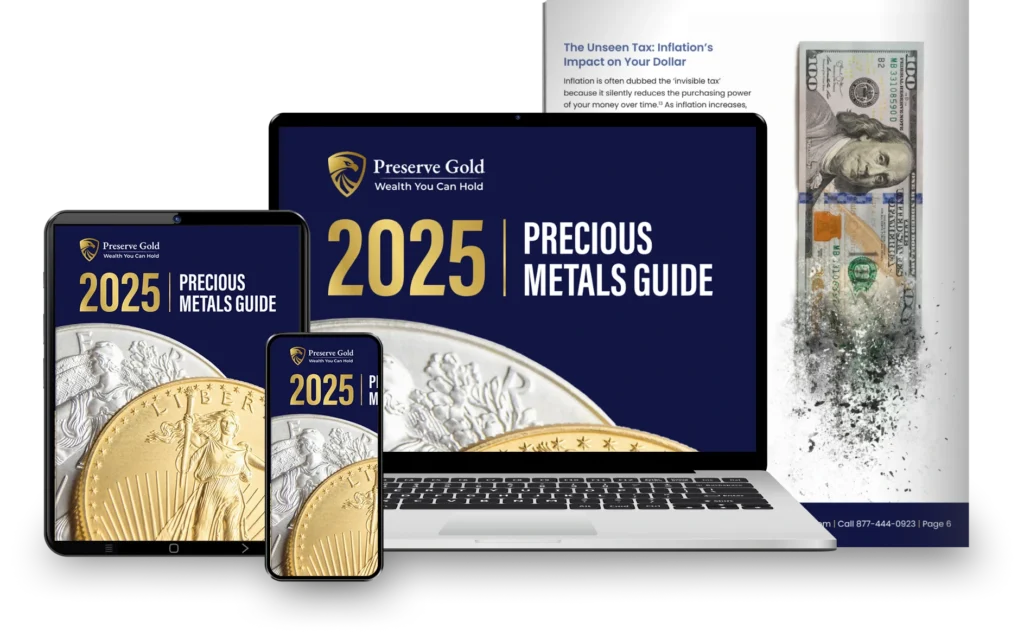By Preserve Gold Research
A quiet storm is brewing in the global silver market amid growing tensions in the Middle East and the ongoing conflict in Ukraine. Many don’t realize that this unassuming metal could soon become the linchpin of military and industrial might, driving its price skyward. Silver’s story is one of versatility and importance, yet its role within military technology remains shrouded in secrecy.
Whispers of silver’s potential in the defense sector have been circulating for years, but recent developments suggest that its demand could spike prices even higher. From advanced weapons systems to cutting-edge military technologies, silver has grown to become an essential component of modern warfare. But, with little transparency surrounding military procurement and usage, analysts have been left to speculate on how this demand might reshape the market landscape in light of current global affairs.
Silver’s Shift to an Industrial Powerhouse
Once primarily used for currency and decorative purposes, silver has evolved into an indispensable element in today’s technological advancements. The shiny metal boasts the highest electrical and thermal conductivity of any known element, making it a key ingredient in producing a wide range of products integral to our daily lives.
For example, silver is used to produce medical devices and equipment in the medical field due to its antimicrobial properties. In the renewable energy sector, it plays a vital role in the production of solar panels and batteries, given its high conductivity and durability.
In the automotive industry, silver is used in catalytic converters to reduce harmful emissions by converting them into less toxic substances.
And in the electronics industry, it’s utilized in a variety of components, from circuit boards to touchscreens. Over half of the world’s annual silver demand comes from industrial use, with the majority used in technology-related applications.
But beyond its ubiquitous presence in consumer products, silver’s role in the defense sector has been quietly growing outside of the public eye.
With increasingly sophisticated military technologies, the white metal has become a strategic component in advanced weaponry, communication systems, and critical defense equipment.
Missile guidance systems, for example, use silver contacts for their high conductivity and reliability. Satellites also rely on silver-coated mirrors for their solar panels, which provide power to run critical communication and surveillance systems.
Advanced military aircraft, like the U.S. F-35 Raptor, use silver in their avionics and electronic systems, ensuring optimal performance and durability in high-stress environments. Silver is also used for electro-magnetically shielding sensitive military equipment from interference, making it essential for maintaining operational security.
And in the age of cyber warfare, the white metal is used in the production of secure communication devices and specialized equipment for protecting against hacking and other electronic threats.
From WWII to the Space Race, How Silver Became Indispensable to Military Technology
Silver’s military involvement isn’t new. During World War II, the United States government released an emergency order for silver to be used in the production of military equipment.
From tank periscopes to naval and aircraft guidance systems, the illustrious metal played a vital role in the war efforts. But it wasn’t until the Manhattan Project, the covert government program that developed nuclear weapons during the war, that silver’s importance in defense began to take shape.
In a move cloaked in secrecy, the U.S. military borrowed 430 million ounces of silver from the U.S. Treasury in 1942 to aid in the production of the world’s first atomic bomb.
Cyclotrons, the large particle accelerators that were used to separate uranium isotopes for the bomb, required massive amounts of silver for their electrical systems. Silver was also used in the construction of calutrons, another type of particle accelerator, essential to the production of plutonium for the bomb.
Between 1942 and 1950, the U.S. government depleted over half of its silver reserves for the Manhattan Project alone—a testament to silver’s newfound indispensability in the military-industrial complex.
Experts say the Manhattan Project may have never been possible without silver. The tight timeline set by President Roosevelt to develop a functional bomb before the Axis powers could do so meant that scientists had to find a way to mass-produce large amounts of enriched uranium and plutonium in record time.
Thanks to the use of silver in critical components of the project, this goal was achieved, firmly cementing its role as a strategic resource for the U.S. military.
During that time, the demand for silver grew so high that the U.S. Mint had to suspend production of proof coins from 1943 to 1949 to divert resources to the war effort. Even after the war ended, the demand for silver in military technology continued to rise as new uses were discovered.
As the dawn of the Cold War approached, the proliferation of nuclear weapons and their delivery systems required even more silver. The metal became a key component in missile guidance systems and satellite technology, as well as in the production of military aircraft and weaponry.
In fact, the first man-made object to enter space, the Sputnik 1 satellite launched by the Soviet Union in 1957, contained silver components in its power system. As the arms race between the U.S. and the Soviet Union intensified, the need for silver only grew larger, with both sides tapping into its unique properties to gain a military advantage.
Rising Military Demand for Silver Sparks Fears of Supply Shortages
With military spending on the rise globally, experts say that silver’s true potential as a strategic metal is yet to be fully realized. As countries modernize their military technology, the demand for silver could increase exponentially, especially with the rise of new technologies such as drones and autonomous weapons systems.
The covert use of the white metal in sensitive military technologies makes it difficult to estimate the amount used. Still, some experts believe that military demand for silver could be up to 15 times greater than any other industry.
In a recent speech at the Institute of International Finance, JPMorgan CEO Jamie Dimon warned that ongoing global conflicts, particularly in Ukraine and the Middle East, may mark the inception of World War III. “World War III has already begun.
You already have battles on the ground being coordinated in multiple countries,” Dimon stated. He pointed to what he calls the “evil axis,” comprised of Russia, Iran, and North Korea, as the main drivers of global conflict and warned that we should be prepared for a long and brutal war. “It’s just a matter of time before [nuclear weapons] are going off in major cities around the world,” he added.
With all three countries ramping up their military spending and modernizing their arsenals, the possibility of a devastating world war looms large.
Echoing Dimon’s concerns, former President Donald Trump highlighted the risk of global catastrophe, citing Iran’s recent missile activities in Israel as a flashpoint. The whole Middle East has been unraveling,” he noted at a recent campaign event. The confluence of these perspectives paints a picture of a world on edge, teetering on the brink of a broader conflict.
A world frozen by fear and uncertainty as nations arm themselves and alliances form to prepare for what experts like Dimon say is an inevitable third world war. The interconnectedness of our global society means that a spark in one region can quickly ignite flames worldwide, raising the stakes and increasing the potential for catastrophic outcomes.
As tensions continue to rise, it brings into question the role of technology, particularly military technology, in shaping the future of warfare. With the need for strategic metals like silver and rare-earth elements increasing, countries are racing to secure these vital resources to fuel their military advancements.
Experts say that this scramble for resources could drive up prices as demand outstrips supply, potentially leading to fierce competition and conflict over access.
Even in the absence of a full-fledged war, silver remains a vital resource for military technology and defense. This helps create a constant demand for the metal, providing price support in the silver market.
According to the Silver Institute, global industrial demand for silver rose by 11% in 2023 and is expected to break another record high in 2024. To what extent the military sector is driving this demand is difficult to say, but one thing is sure: silver’s role in modern warfare isn’t going away anytime soon.
Market Forces Align for a Potential Silver Squeeze
With silver prices already up over 40% this year, the military’s continued reliance on the metal could prove to be a significant driver in its continued rise. Already, silver faces supply constraints as mining production struggles to keep up with demand.
Global mining production has decreased since peaking in 2016 due in part to the declining grade of silver ore and environmental regulations. New deposit discoveries have also been limited while existing mine reserves continue to decline.
On the demand side, silver’s use in military technology is just one piece of the puzzle. The metal is also widely used in renewable energy technologies, such as solar panels and electric vehicles.
As the world transitions towards a more sustainable future, demand for silver is expected to continue rising. Combined with the recent wave of retail interest in silver, experts say a perfect storm could be brewing for a silver squeeze.
Apart from the supply-demand imbalance, silver’s potential price surge could also be fueled by the disparity between its spot price and the paper silver market. Future contracts for silver have been heavily shorted for decades, artificially suppressing the metal’s price.
The paper-to-silver ratio, or the amount of paper contracts for every physical ounce of silver, has reached staggering levels recently, with some estimates putting it at over 400 to 1. This means that there are 400 paper claims on every physical ounce of silver. If even a tiny fraction of these paper contracts were to be exercised for physical silver, the market could face a shortage, causing prices to surge.
With increased interest in physical silver amid the recent retail buying frenzy, a growing chorus of experts believe that a short squeeze in the silver market is possible and perhaps even inevitable.
What does this all mean for the average American? It could mean higher prices for everyday items that contain silver, such as electronics and jewelry. But it could also present a unique investment opportunity for those looking to diversify their savings with one of the world’s oldest and most trusted forms of money.
With the hidden potential for a silver squeeze that could be catalyzed by any of the myriad factors at play, the illustrious metal’s bull run could be just getting started.

